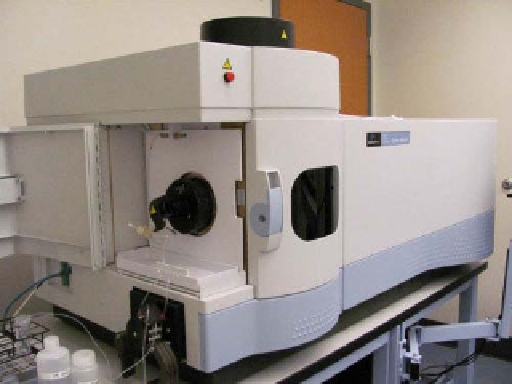Biomedical Engineering Reference
In-Depth Information
however, in ICP-oES, elements are detected by the optical emissions emitted from
the excited atoms in the sample and not by mass-to-charge ratio. Each element
releases emissions at certain characteristic wavelengths; in an ICP-oES, the full
spectrum of emissions is collected through a viewing window, and the wavelengths
are subsequently separated using a series of gratings and prisms and then detected on
a CCD as electrical signal. The detection limits on the ICP-oES are typically at least
one order of magnitude higher than those on ICP-MS, and it also cannot be used to
measure isotopic ratios; however, as ICP-oES can tolerate sample matrices with
higher total dissolved solids, it can be useful for samples in concentrated saline and
buffer solutions. The ICP-oES is also a good option for analysis of elements like
sulfur and iron that experience significant interferences on ICP-MS. an overall view
of the instrument is shown in figure 6.2.
one drawback associated with atomic spectroscopy analysis of nanoparticles in
liquid suspensions and within biological samples is that when the sample is dissolved
for analysis, it becomes impossible to distinguish between the mass of an element
that was bound in particle form and the mass of the same element that may have been
dissolved in the sample. Typically, the vast majority of the mass of an element in a
particle sample is coming from the particles and not ions dissolved in the solution;
however, the contribution of ions produced by a dissolving particle is now getting
some attention in the toxicity field. Recent advances in single particle inductively
coupled plasma mass spectrometry (SP-ICP-MS) are beginning to address this issue
of differentiation between dissolved and particle-bound mass. With a sufficiently fast
detector speed, it is possible to detect single nanoparticles in a dilute solution as
pulses of signal and differentiate them from ions of the same element, which produce
a constant signal.
figure 6.2
optima 7300 DV inductively coupled plasma optical emission spectrometer
(ICP-oES) from Perkin Elmer.

Search WWH ::

Custom Search